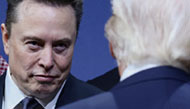
Richard F. Rashid of Microsoft says big companies can drive innovation.
WIRELESS WONDERS - Computers systems employ inexpensive sensors to improve efficiency and reduce waste.STEVE LOHR - ESSAY
For more than a decade, the prevailing view of innovation has been that small companies had the edge. Innovation bubbled up from the bottom. Big companies didn’t innovate, and government got in the way.
There was a lot of business-school research supporting the notion that innovation comes most naturally from small-scale outsiders. That was the headline point that a generation of business people, venture investors and policy makers took away from Clayton M. Christensen’s 1997 classic, “The Innovator’s Dilemma,” which examined the process of disruptive change.
But a shift in thinking is under way, driven by altered circumstances. In the United States and abroad, the biggest economic and social challenges - and potential business opportunities - are problems in multifaceted fields like the environment, energy and health care that rely on complex systems.
Solutions won’t come from the next new gadget or clever software, though such innovations will help. Instead, they must plug into a larger network of change shaped by economics, regulation and policy. Progress, experts say, will depend on people in a wide range of disciplines, and collaboration across the public and private sectors.
“These days, more than ever, size matters in the innovation game,” said John Kao, a former professor at the Harvard Business School and an innovation consultant.
In its economic recovery package, the Obama administration is financing programs to generate innovation with technology in health care and energy. The government will spend billions to accelerate the adoption of electronic patient records to help improve care and curb costs, and billions more to spur the installation of so-called smart grids that use sensors and computerized meters to reduce electricity consumption.
In other developed nations, where energy costs are higher than in the United States, government and corporate projects to cut fuel use and reduce carbon emissions are further along. But the Obama administration is pushing environmental and energy conservation policy more in the direction of Europe and Japan. The change will bolster demand for more efficient and more environmentally friendly systems for managing commuter traffic, food distribution, electric grids and waterways.
These systems are animated by inexpensive sensors and ever-increasing computing power but also require the skills to analyze, model and optimize complex networks, factoring in things as diverse as weather patterns and human behavior.
Big companies like General Electric and I.B.M. that employ scientists in many disciplines typically have the skills and scale to tackle such projects. Their advantage is in “being able to integrate innovations across these complex systems,” said James E. Spohrer, a scientist at I.B.M.’s Almaden Research Center in San Jose, California.
Technology trends also contribute to the rising role of large companies. The lone inventor will never be extinct, but W. Brian Arthur, an economist at the Palo Alto Research Center, says that as digital technology evolves, step-by-step innovations are less important than linking all the sensors, software and data centers in systems.
Today, Mr. Arthur said, the unfolding “digitization of the economy” is in some ways a modern rerun of past technology waves, from steam power to electricity. “It’s not individual inventions that matter so much, but when large bodies of technology come together and have an impact across the economy,” he said. “That’s what we’re seeing now.”
In computing, some technological frontiers require size and money. To be competitive in Internet search and some other Web services, which cater to hundreds of millions of users, a company must build data centers of gargantuan size, and only a handful of companies can design and afford them, led by Google and Microsoft.
“There are just a few companies in a position to do computing and process data in a way never done before,” observed Richard F. Rashid, Microsoft’s senior vice president for research.
In health care, institutions that have done best in improving the health of patients with chronic conditions like heart disease and diabetes have been larger, integrated systems. They have the scale and incentives to invest in things like wellness programs and electronic health records.
In a new book on health care, “The Innovator’s Prescription,” Mr. Christensen and the co-authors, Dr. Jerome H. Grossman and Dr. Jason Hwang, say that such large integrated systems “have the scope to create within themselves a new disruptive value network.”
In an e-mail message, Mr. Christensen, a professor at the Harvard Business School, said that big companies do tend to resist disruptive innovation but that size need not spell failure. “The good news is that, once they recognize the benefits of disruptive thinking,” he wrote, “the big companies have all the resources necessary to induce change.”
스마터리빙
more [ 건강]
[ 건강]이제 혈관 건강도 챙기자!
[현대해운]우리 눈에 보이지 않기 때문에 혈관 건강을 챙기는 것은 결코 쉽지 않은데요. 여러분은 혈관 건강을 유지하기 위해 어떤 노력을 하시나요?
 [ 건강]
[ 건강]내 몸이 건강해지는 과일궁합
 [ 라이프]
[ 라이프]벌레야 물럿거라! 천연 해충제 만들기
 [ 건강]
[ 건강]혈압 낮추는데 좋은 식품
[현대해운]혈관 건강은 주로 노화가 진행되면서 지켜야 할 문제라고 인식되어 왔습니다. 최근 생활 패턴과 식생활의 변화로 혈관의 노화 진행이 빨라지고
사람·사람들
more
“취미생활로 다진 친목… 선후배들과 만든 모교사랑”
사진러브한인 사진 동호회 사진러브(회장 크리스 고)는 13일 용수산에서 송년모임을 갖고 한 해를 마무리하는 뜻깊은 시간을 가졌다. 이날 모임에…

[홀인원] 이상원 박사
일반외과 전문의 이상원(왼쪽) 박사가 지난 9일 뉴포트비치 소재 골프장 9번 홀(152야드)에서 레스큐 클럽으로 친 샷이 그대로 홀에 빨려 들…
[송년행사 게시판] 재미시인협회
재미시인협회(회장 지성심)는 오는 20일 오후 4시 가든스윗호텔에서 한 해를 마무리하며 동인지 ‘외지’ 제35집 출판 기념회와 ‘제23회 재미…
[송년행사 게시판] 향군단체 연합
6.25 참전유공자회와 대한민국 육군협회 등 남가주 지역 향군 단체 연합은 19일 오전 11시30분, 용궁에서 송년 행사를 개최한다. 드레스코…
[송년행사 화보] “이웃과 함께 나누고 지인과 함…
KYCC13일 윌튼 플레이스 초등학교에서 열린 ‘한인타운청소년회관(KYCC) 홀리데이 카니발’이 성황리에 막을 내렸다. 올해는 KYCC 창립 …
많이 본 기사
- “1인당 2,000달러 환급금·세금 … 4
- ‘반이민 가속페달’⋯ 시민권자도 대거… 3
- ‘김혜성도 넘었다’ 6년 120억 결… 1
- ‘통일교 의혹’ 전재수, 14시간여 마라톤 조사…혐의 전면 부인
- 글로벌제약사 9곳 ‘약값 인하’ 동참…트럼프 “全미국인에 혜택”
- 美, 시리아 IS 겨냥 대대적 공습… “전쟁 시작 아닌 복수 선언”
- 루비오 국무장관 “韓·日 등 동맹과 약속 훼손 없이 中과 협력 모색”
- 美, 베네수 마두로 압박 강화…처제·동서·조카 무더기 제재
- ‘80세’ 선우용여, 대세 유튜브 수… 1
- 재판서 드러난 통일교의 ‘큰그림’”청… 3
- 기아 미국법인, 2026년형 ‘K4 … 1
- “스페이스X, 상장 주관사 선정 착수…모건스탠리 유력”
- 브라운대 총격 용의자 시신 발견… ‘… 1
- 故윤석화 빈소에 추모 발길… “하늘에서 좋은 작품 많이 하기를”
- “AI 보안으로 클라우드 시장 잡자”…구글, 100억 달러 보안 파트너십
- ‘수퍼 독감’ 확산… 확진 4배 급증
- 尹, 내일 김건희특검 처음이자 마지막 조사…6개 피의사실 추궁
- 트럼프 측근에 구글 창업자도…엡스타인… 1
- “박나래, 주사 이모 약에 내성 생겨..약 떨어지면 연락하라고”
- 센터빌 식당서 벌써 4% 부과 ‘말썽… 1
- 거주·투자용 한국 부동산 인기… 한인 유치 ‘치열’
- 동업자에서 채무자로..MC몽, 차가원… 1
- 시민권 박탈 착수⋯매달 200명 1
- ‘테슬라 2018년 머스크 보상안’ 법원서 부활…1천400억달러 규모
- 뉴욕주 차량운전자 벌점 규정 대폭 강화
- “개인 부동산 취득, 법카 사적 유용” 박수홍 친형 구속 이유 보니
- 中, ‘트럼프와 합의’ 美대두 수입 … 1
- 연말이 되면 사라지는 선택들
- 테라폼랩스 파산관재인, 테라 가격부양 금융사에 수조원대 소송
- “트럼프, 강경화 대사에 ‘李대통령과 최고의 협력관계’ 언급”
- 트럼프, 화성은 미루고 달부터…머스크… 2
- 뉴욕-뉴저지 다리· 터널 통행료 또 오른다
- 구리 절도 기승⋯ 가로등 ‘깜깜’
- 빅터차 “트럼프-김정은 내년 1분기에… 1
- 한국계 美국방부 인·태 차관보 존 노… 1
- 뉴욕한인회 곽호수 이사장 ‘회장 판공비 논란’ 전격사임
- 시신 훔쳐 팔아넘긴 부부 징역 중형 1
- “암 검진 본인 부담금 폐지”
- 40·50대 은퇴, 자산은 있는데 확신은 없다
- 美, 동태평양서 또 마약운반선 2척 공격…5명 사망
- [화제] 베조스 전 부인… ‘기부의 여왕’ 변신
- 트럼프, 베네수엘라와 전쟁가능성 “배제 안해”
- 퀸즈장로교회 ‘사랑의 바구니’130개 이웃에 전달
- 팀스피릿 부동산그룹 송년모임
- 전현무, 차량 링거 결국 입 열었다.. “의사 진료 처방..불법 NO”
- 뉴욕연은총재 “기술적문제로 11월 소… 1
- 이재용 아들의 시민권 포기가 불러온 오해
- 김민선 백악관 자문위원 백악관 연말 파티 참석
- 한인 헤지펀드 거물, CNN 인수 추진
- 제네시스, 비영리 단체들에 300만달러 지원
1/5지식톡

-
 ☝️해외에서도 가능한 한국어 선생님…
0
☝️해외에서도 가능한 한국어 선생님…
0이 영상 하나면 충분합니다!♥️상담신청문의♥️☝️ 문의 폭주로 '선착순 상담'만 진행합니다.☎️ : 02-6213-9094✨카카오톡ID : @GOODEDU77 (@골뱅이 꼭 붙여주셔야합니다…
-
 테슬라 자동차 시트커버 장착
0
테슬라 자동차 시트커버 장착
0테슬라 시트커버, 사놓고 아직 못 씌우셨죠?장착이 생각보다 쉽지 않습니다.20년 경력 전문가에게 맡기세요 — 깔끔하고 딱 맞게 장착해드립니다!장착비용:앞좌석: $40뒷좌석: $60앞·뒷좌석 …
-
 식당용 부탄가스
0
식당용 부탄가스
0식당용 부탄가스 홀세일 합니다 로스앤젤레스 다운타운 픽업 가능 안녕 하세요?강아지 & 고양이 모든 애완동물 / 반려동물 식품 & 모든 애완동물/반려동물 관련 제품들 전문적으로 홀세일/취급하는 회사 입니다 100% …
-
 ACSL 국제 컴퓨터 과학 대회, …
0
ACSL 국제 컴퓨터 과학 대회, …
0웹사이트 : www.eduspot.co.kr 카카오톡 상담하기 : https://pf.kakao.com/_BEQWxb블로그 : https://blog.naver.com/eduspotmain안녕하세요, 에듀스팟입니다…
-
 바디프렌드 안마의자 창고 리퍼브 세…
0
바디프렌드 안마의자 창고 리퍼브 세…
0거의 새제품급 리퍼브 안마의자 대방출 한다고 합니다!8월 23일(토)…24일(일) 단 이틀!특가 판매가Famille: $500 ~ $1,000Falcon: $1,500 ~ $2,500픽업 & 배송직접 픽업 가능LA…
케이타운 1번가
오피니언
 한영일 / 서울경제 논설위원
한영일 / 서울경제 논설위원[만화경] 웰다잉 인센티브
 캐슬린 파커 워싱턴포스트 칼럼니스트
캐슬린 파커 워싱턴포스트 칼럼니스트 [캐슬린 파커 칼럼] 아이들을 온라인에서 보호하기
 양상훈 수필가ㆍ시인
양상훈 수필가ㆍ시인 [한국춘추] 경제대공황ㆍ제2차 세계대전 승리로 극복한 루스벨트 리더쉽

[왈가 왈부] 고환율에 외환 건전성 완화·서학개미 규제… 미봉책 아닌가요
 수잔 최 한미가정상담소 이사장 가정법 전문 변호사
수잔 최 한미가정상담소 이사장 가정법 전문 변호사 [수잔 최 변호사의 LIFE &] AI 시대 편리함에 안주하지 말자
 김도년 성균관대 건축학과 교수 스마트도시·건축학회장
김도년 성균관대 건축학과 교수 스마트도시·건축학회장 [로터리] 지멘스가 만드는 미래 동네
1/3지사별 뉴스

퀸즈장로교회 ‘사랑의 바구니’130개 이웃에 전달
퀸즈장로교회가 18일 크리스마스를 앞두고 교인들의 정성과 사랑이 듬뿍 담긴 ‘사랑의 바구니’ 130개를 소방서와 경찰서, 요양원, 선교회, 그…
시민권 박탈 착수⋯매달 200명

“이웃 돌보는 여러분이 동역자”
워싱턴성광교회(담임목사 임용우)는 18일 한인단체와 소방서‧도서관 등에 총 2만9천 달러의 성금을 전달했다. 지난 2011년부터 15년째 지역…
소기업 지원에 1천만 달러 투자

위기의 트럼프 “내년봄 최대규모 세금환급”
트럼프 대통령은 17일 “취임 1년 만에 우리는 누구도 상상하지 못한 성과를 이뤄냈다”고 말했다.트럼프 대통령은 동부시간 이날 밤 9시부터 백…
[새해부터 이렇게 달라진다] 최저임금 또 오르고… 유급 병가는 더 확대

오늘 하루 이 창 열지 않음 닫기 




















































.png)


댓글 안에 당신의 성숙함도 담아 주세요.
'오늘의 한마디'는 기사에 대하여 자신의 생각을 말하고 남의 생각을 들으며 서로 다양한 의견을 나누는 공간입니다. 그러나 간혹 불건전한 내용을 올리시는 분들이 계셔서 건전한 인터넷문화 정착을 위해 아래와 같은 운영원칙을 적용합니다.
자체 모니터링을 통해 아래에 해당하는 내용이 포함된 댓글이 발견되면 예고없이 삭제 조치를 하겠습니다.
불건전한 댓글을 올리거나, 이름에 비속어 및 상대방의 불쾌감을 주는 단어를 사용, 유명인 또는 특정 일반인을 사칭하는 경우 이용에 대한 차단 제재를 받을 수 있습니다. 차단될 경우, 일주일간 댓글을 달수 없게 됩니다.
명예훼손, 개인정보 유출, 욕설 등 법률에 위반되는 댓글은 관계 법령에 의거 민형사상 처벌을 받을 수 있으니 이용에 주의를 부탁드립니다.
Close
x